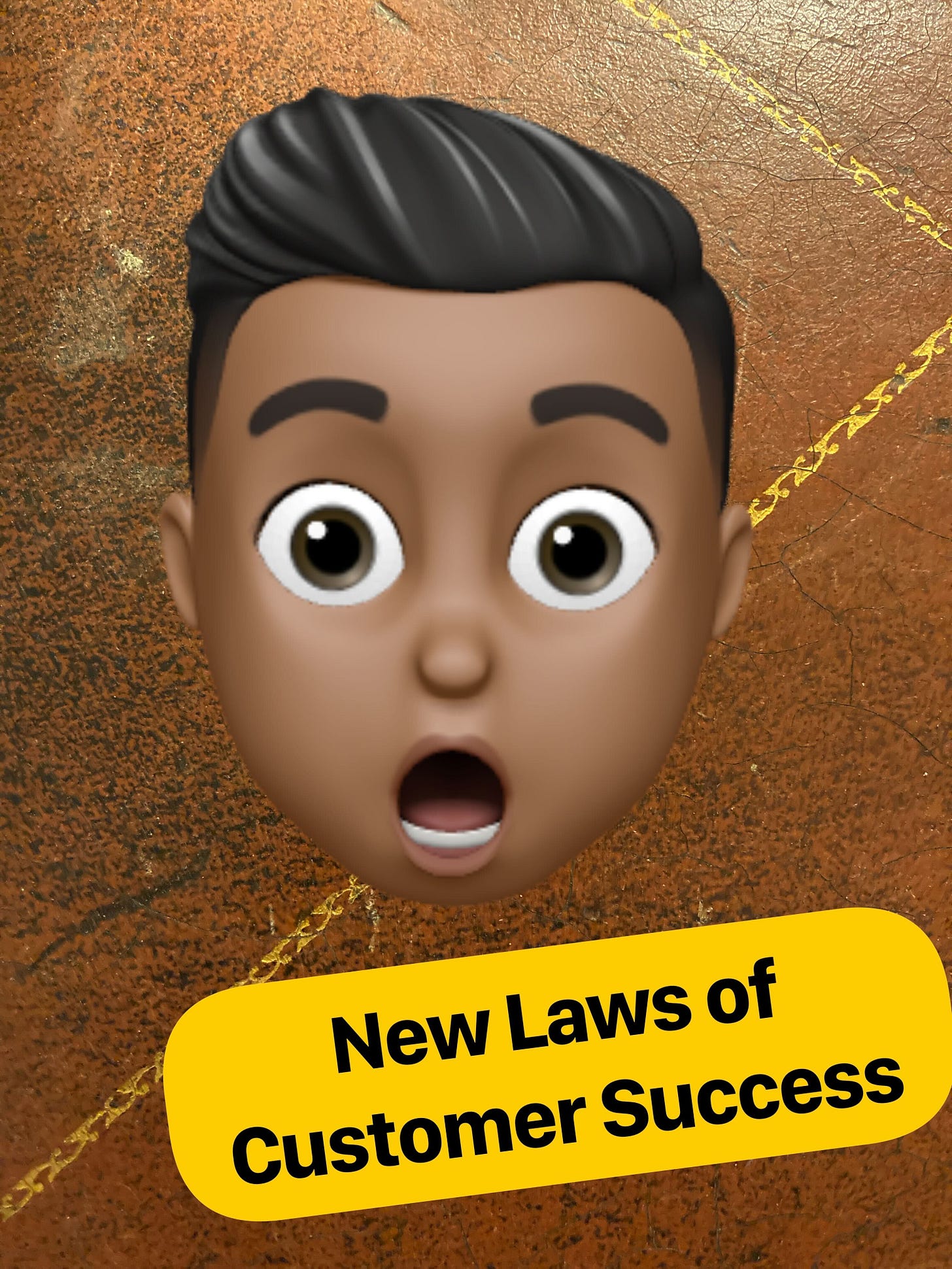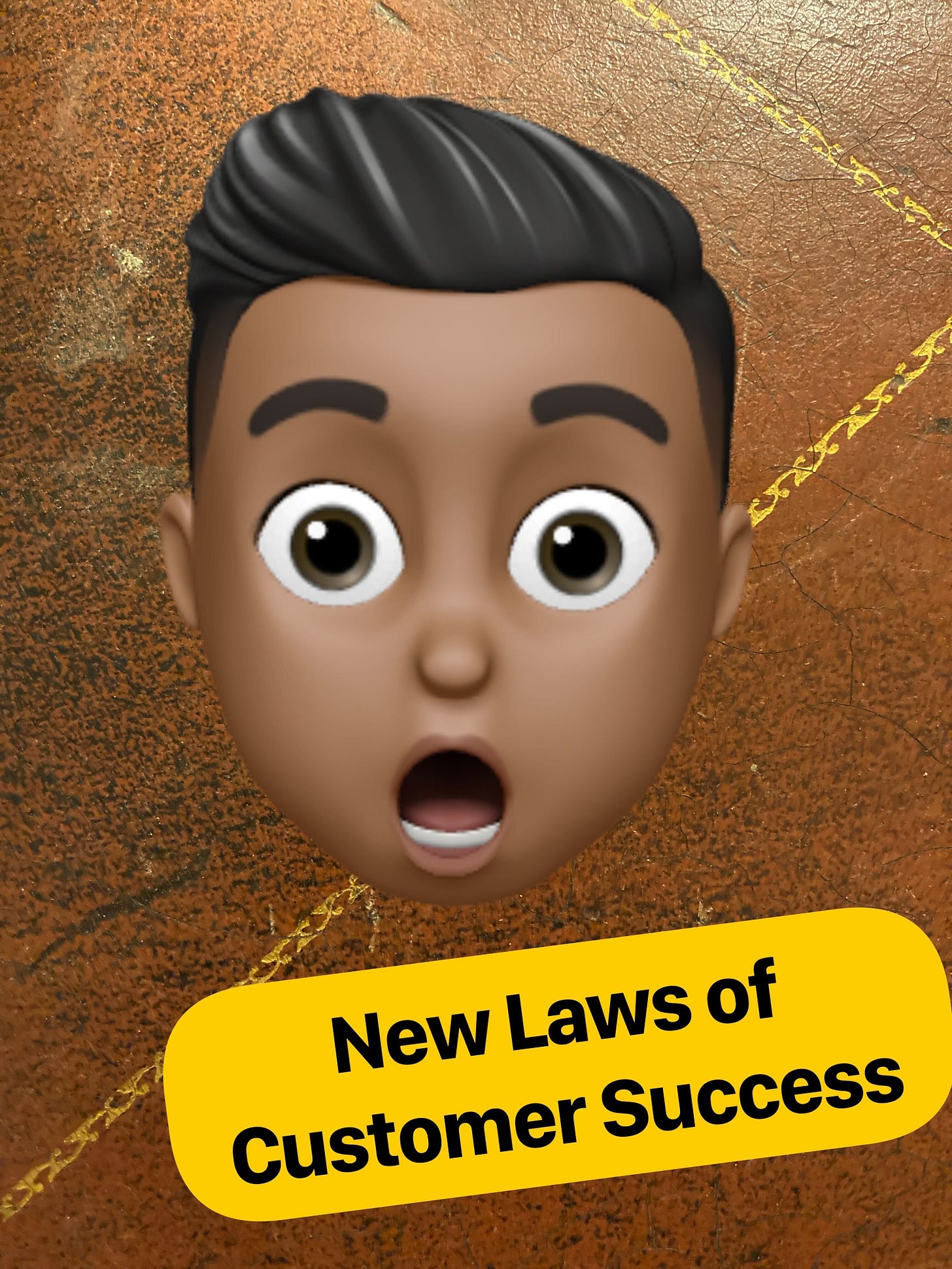A Framework for Killer QBRs
The Winning Formula for Killer QBRs; the one framework to make your QBRs unforgettable
Each week — we examine the greatest frameworks from entrepreneurs to psychologists —in order to hone our own executive communication skills and become unforgettable in less than 5 minutes a week.
Have you ever wondered why the best Customer Success Managers (CSMs) are such great communicators during their Quarterly Business Reviews (QBRs)?
And no, I'm not talking about bombarding your customers with flashy slides, or cringe analogies, but rather engaging them in a conversation that leaves them eager to continue partnering with you. Turns out, Kapta, a company that decided to do some snooping around, interviewed over 100 customers to see how they could improve their QBRs. And guess what they found?
Customers were bored to tears with the same old graphs and numbers, and craved a good narrative to spice things up. This is what they heard:
“They are a waste of time.”
“I ask my vendors for 4 charts and they show up with 55 PowerPoint slides.”
“I’ve started delegating these meetings to my staff because they just aren’t important to me.”
“The conversation is way too tactical, not strategic at all.”
“They haven’t done their homework. Their executives show up and ask the same questions ever time.”
“The vendors just talk, they don’t ask questions or listen to what I need.”
“Who says these meetings have to be every 90 days? Sometimes I need a vendor communicating with me much more often, sometimes much less. But they never ask how I want to work with them.”
The customers didn't hold back and shared their thoughts on what they really desired from these meetings.
So, what were their demands, you ask? Let me spill the tea...
“Strategic guidance, not just reviews of bug lists and problems.”
“Bring the conversation back to why we bought from them in the first place.”
“Bring me ideas to make me and my team look like heroes.”
“No bullshit. If something isn’t going as planned, own it and show me how you are going to fix it.”
“I want vendors to update me on how their service is helping me to meet MY goals, not theirs.”
Well, it seems we're facing a common challenge: how to deliver an outstanding Quarterly Business Review (QBR) that showcases your confidence and captivates your customers with strategic guidance.
But what da fuq does “strategic guidance” even mean, ya know? Fear not, my friends. After conducting extensive research and analyzing successful QBRs, I've developed a framework that can work wonders for you - the GOAL framework.
By following this approach, you can elevate your QBR game and leave a lasting impression on your customers.
G = Ground them
Two things you gotta keep in mind: 1) why they're there and 2) the wins achieved and why they bought (most people screw this up, don't be like them).
First off, make sure to ground them on why they're there.
Start by stating the outcomes you're hoping to achieve by the end of the meeting. Break it down into three pillars, and see if they have anything else they want to add:
“By the end of this meeting, I’d love for you to [insert your outcomes]. To do that, I’ve. broken it in up 3 pillars, starting X, then Y, and then Z. Besides the things I’ve mentioned, was there anything you were hoping to get out of the meeting?”
Second, ground them on the wins achieved thus far and why they bought
Next, show them the wins achieved so far and remind them why they bought from you. Give a shout-out to the team you've been working with in front of their boss, and highlight how your software has exceeded their benchmarks:
“Really quickly, before we jump into it, I just wanted to give a small shout-out to [insert customer name you've been working with]. I understand that a company's biggest fear when buying software is that it sits on the shelf and never gets used. However, [X person] has managed this in a way that exceeds our recommended benchmarks. This is what this slide is showing us. And you know, numbers aside, end users are loving it. We even had one of your employees share this feedback with us”
Use some NPS scores or quotes to show how your service is helping employees in their daily lives. Keep it spontaneous and quick, spend around 30 seconds, and then dive into the strategic slides:
"Now, when you first engaged with us, you all wanted to solve [X problem] and achieve [Y outcome]. Thus, our teamwork has focused on solving this issue. Is this different since we spoke? I'm curious if your goals have changed since so much has happened in [insert your customer's industry].”
Ask your salespeople, "Hey, why did X customer buy us?" Which issue were you addressing? to find out.
Listen and show the customer you understand their world.
O = Outcomes
Next time you’re getting ready for a QBR, ask your main point of contact a few days in advance via email:
"Hey, who comes to mind when you think of the top performers in the field of X?" And who comes to mind as someone who might require some additional assistance? I ask because I'd like to look into the gaps between your top performer and a user who may require additional assistance within our application, and have our team dig up some insights on how we could close the gap. We've done this with a few customers, and the results have been incredible."
Now, when you're prepping for your QBR, think about the outcomes that your customers are looking to achieve. Dig into how the top performer is using our application to achieve their goals versus the employee who needs more support.
Trust me, this approach will help you uncover some unique insights that you can share during your meeting.
**Of course, I understand that this style may not work for every solution out there. But, take this thought process and try to apply it to your product.**
Once you have your observations, share them right away:
"One interesting thing we've noticed is that X person, who you said was the top performer, did [X] to get there, which wasn't something that most people did within the application. I wonder if this workflow will help close the gap between our top performers and everyone else. But, the data only tells me half the story. Tell me, when you're trying to achieve [insert their desired outcome], what gaps do you see between your best performers and maybe some people who could be doing more?"
That way, you get them to consider how your customers can replicate their success using our tool.
Pretty neat, huh? They may agree or disagree, but you have achieved your goal. Getting them to consider how your customers can replicate their success using your tool.
A = Ask the right questions
Don't just fire off questions like a robot with a bad case of hiccups. Ask questions with purpose and personality, like you're on a first date with your customer's world and you want to know everything about them.
Asking the right questions is key to understanding your customer's world and how you can help them solve their challenges. The questions you ask will depend on your industry and the specific challenges your customers face.
One powerful opener I like to use is:
"In my conversations with [insert customer's job title], I often hear that challenge 1, challenge 2, or challenge 3 are significant pain points. How do these challenges resonate with you?"
Another question that can uncover valuable insights is:
"How did you discover that this challenge was a problem? Was there a specific metric or number that made you realize this was a critical issue that needed to be addressed?"
I also like to ask what I call an "awkward question," inspired by Chris Orlob:
"Can I ask you an awkward question? What kind of ripple effects is this challenge having on you personally?"
Remember, these are just frameworks, not rigid scripts. The key is to use your knowledge of your business and your customers' challenges to ask the right questions that will uncover valuable insights and help you provide the solutions they need.
L = Label next steps
Instead of "dumping" suggestions on your clients, try a more collaborative approach.
Begin with a permission-based question that invites their input and signals your humility. For example:
"Hmm.. what are your thoughts on this. I’ve been thinking about how we can solve this challenge, but I don’t know if its 100% applicable. Do you mind if I share a few ideas and get your thoughts?"
By starting with a collaborative question, you're more likely to engage your client's curiosity and encourage them to participate in the conversation.
And as you work with your client to develop solutions, don't forget to wear your project management hat and label next steps to turn ideas into action.
Keep in mind that the examples I shared might not perfectly match your unique situation. Life is full of nuances, which is why I'm a big fan of using frameworks instead of “scripts.” If I were in your shoes, I'd examine the framework and the example I provided and brainstorm ways that you can use them to enhance your executive communication skills for your upcoming QBRs.
That’s it for this week :)
I'm grinding day and night, more than 80 hours a week, to create the best content out there for all you execs trying to level up your communication skills. And hey, I'm not just saying that 'cause my mom thinks so! If you found this helpful, do me a solid and share it with someone who could use it.
It's the ultimate compliment, ya know?
And if you know any customer-facing wizards who are all about that open life, bring 'em into our tight-knit crew, one person at a time. Spread the word and let's keep the good vibes flowing. That's it for now, but I'll be back with more fire content soon.
Until then, keep crushing it like the rockstars you are. Peace out!





